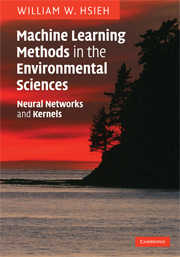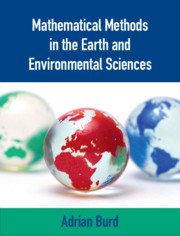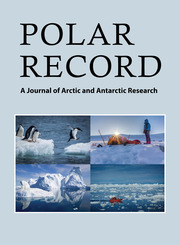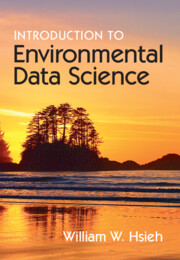Machine Learning Methods in the Environmental Sciences
Machine learning methods originated from artificial intelligence and are now used in various fields in environmental sciences today. This is the first single-authored textbook providing a unified treatment of machine learning methods and their applications in the environmental sciences. Due to their powerful nonlinear modeling capability, machine learning methods today are used in satellite data processing, general circulation models(GCM), weather and climate prediction, air quality forecasting, analysis and modeling of environmental data, oceanographic and hydrological forecasting, ecological modeling, and monitoring of snow, ice and forests. The book includes end-of-chapter review questions and an appendix listing web sites for downloading computer code and data sources. A resources website containing datasets for exercises, and password-protected solutions are available. The book is suitable for first-year graduate students and advanced undergraduates. It is also valuable for researchers and practitioners in environmental sciences interested in applying these new methods to their own work.
<br/>
<b>Preface Excerpt</b>
<br/>
Machine learning is a major subfield in computational intelligence (also called artificial intelligence). Its main objective is to use computational methods to extract information from data. Neural network methods, generally regarded as forming the first wave of breakthrough in machine learning, became popular in the late 1980s, while kernel methods arrived in a second wave in the second half of the 1990s. This is the first single-authored textbook to give a unified treatment of machine learning methods and their applications in the environmental sciences.
<br/><br/>
Machine learning methods began to infiltrate the environmental sciences in the 1990s. Today, thanks to their powerful nonlinear modeling capability, they are no longer an exotic fringe species, as they are heavily used in satellite data processing, in general circulation models (GCM), in weather and climate prediction, air quality forecasting, analysis and modeling of environmental data, oceanographic and hydrological forecasting, ecological modeling, and in the monitoring of snow, ice and forests, etc.
<br/><br/>
This book presents machine learning methods and their applications in the environmental sciences (including satellite remote sensing, atmospheric science, climate science, oceanography, hydrology and ecology), written at a level suitable for beginning graduate students and advanced undergraduates. It is also valuable for researchers and practitioners in environmental sciences interested in applying these new methods to their own work.
<br/><br/>
Chapters 1-3, intended mainly as background material for students, cover the standard statistical methods used in environmental sciences. The machine learning methods of chapters 4-12 provide powerful nonlinear generalizations for many of these standard linear statistical methods. End-of-chapter review questions are included, allowing readers to develop their problem-solving skills and monitor their understanding of the material presented. An appendix lists websites available for downloading computer code and data sources. A resources website is available containing datasets for exercises, and additional material to keep the book completely up-to-date.
<br/><br/>
<b>About the Author</b>
<br/>
WILLIAM W. HSIEH is a Professor in the Department of Earth and Ocean Sciences and in the Department of Physics and Astronomy, as well as Chair of the Atmospheric Science Programme, at the University of British Columbia. He is internationally known for his pioneering work in developing and applying machine learning methods in environmental sciences. He has published over 80 peer-reviewed journal publications covering areas of climate variability, machine learning, oceanography, atmospheric science and hydrology.
- Offers broad coverage of the applications of modern non-linear machine learning methods in remote sensing, atmospheric science, oceanography, hydrology and ecology, providing the most extensive resource available
- An appendix listing websites for downloading computer codes and datasets allows the reader to apply the methods discussed in the book to real datasets
- End-of-chapter exercises and a course website with updates to the book material develop problem-solving skills and keep the student/reader at par with new developments
Reviews & endorsements
'… one of the first books describing machine learning techniques in the context of environmental applications … goes a long way in explaining these subjects in a very clear, concise, and understandable way. This is one of the few books where one will find diverse areas of machine learning all within the same cover … aimed at advanced undergraduates and PhD students, as well as researchers and practitioners. No previous knowledge of machine learning concepts is assumed.' Vladimir Krasnopolsky, National Oceanic and Atmospheric Administration (NOAA) and National Weather Service
'[This book] aims to, and succeeds in, bridging the gap between AI and what is often referred to as conventional statistics. Add to that the unique perspective that a physicist and an environmental scientist brings to the table, and one has a truly rare book. … a well-balanced mix of theoretical and practical exercises. … Hsieh's book [is] ideal as both a textbook on the topic, and a reference book for the researcher in the field.' Caren Marzban, University of Washington and University of Oklahoma
'The material is explained in a straightforward, clear, concise, and complete manner. The reader does not have to wade through lengthy explanations and can proceed quickly. All relevant topics are covered from historical to very recent. The full mathematical equations are presented for every topic so the reader may fully appreciate the theory and concepts discussed. Numerous diagrams are included, and are of great utility for explaining complex material and concepts. All of the main facets of machine learning are covered, including theory, data selection, data reduction and data clustering, and problems of overfitting and underfitting data.
This book is unique because it presents machine learning in the context of environmental science applications. I found it to be a valuable tool to bring myself up-to-date with the historical and recent developments in the subject of machine learning, and I believe the reader will too. The purchase price is modest. I highly recommend that any student or researcher interested in machine learning methods obtain a copy.' The material is explained in a straightforward, clear, concise, and complete manner. The reader does not have to wade through lengthy explanations and can proceed quickly. All relevant topics are covered from historical to very recent. The full mathematical equations are presented for every topic so the reader may fully appreciate the theory and concepts discussed. Numerous diagrams are included, and are of great utility for explaining complex material and concepts. All of the main facets of machine learning are covered, including theory, data selection, data reduction and data clustering, and problems of overfitting and underfitting data.' CMOS Bulletin
Product details
September 2009Adobe eBook Reader
9780511590856
0 pages
0kg
This ISBN is for an eBook version which is distributed on our behalf by a third party.
Table of Contents
- Preface
- 1. Basic notions in classical data analysis
- 2. Linear multivariate statistical analysis
- 3. Basic time series analysis
- 4. Feed-forward neural network models
- 5. Nonlinear optimization
- 6. Learning and generalization
- 7. Kernel methods
- 8. Nonlinear classification
- 9. Nonlinear regression
- 10. Nonlinear principal component analysis
- 11. Nonlinear canonical correlation analysis
- 12. Applications in environmental sciences
- Appendix A. Sources for data and codes
- Appendix B. Lagrange multipliers
- Bibliography
- Index.






